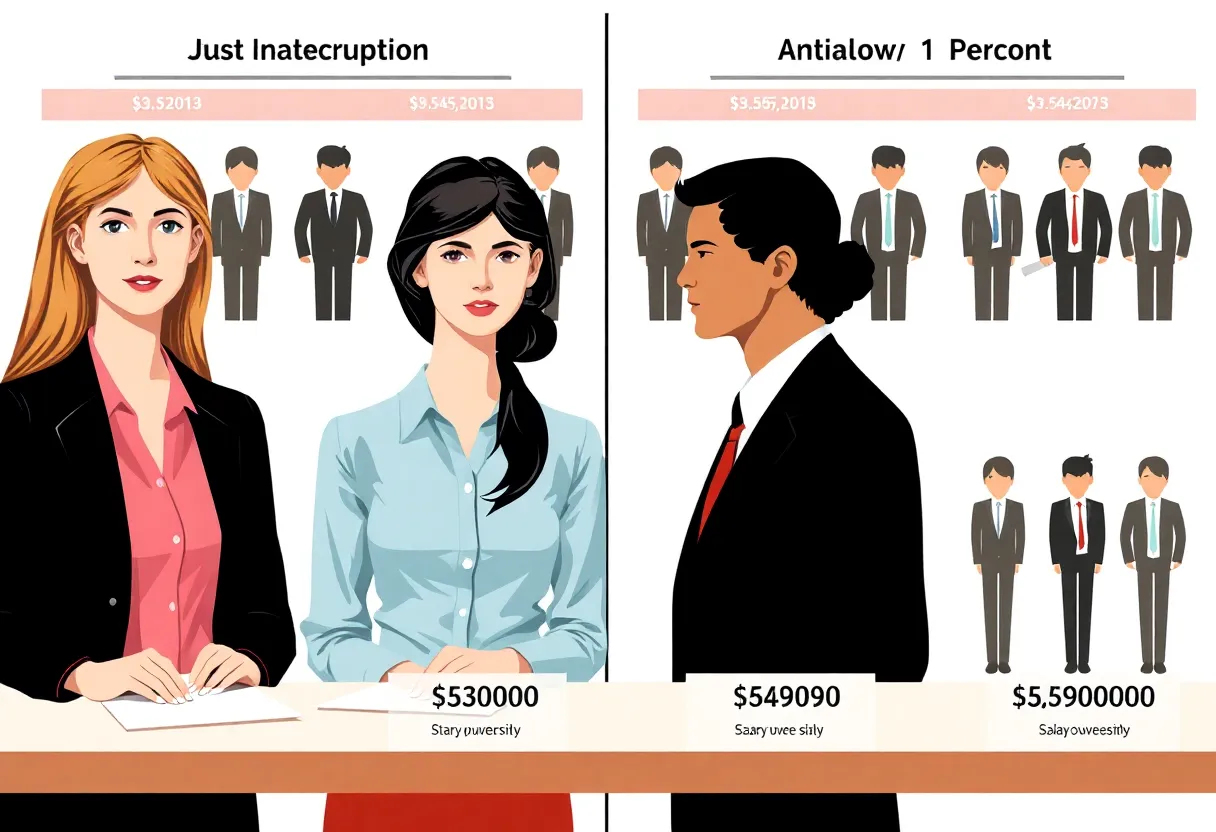News Summary
Recent census data reveals that Richmond, Virginia, faces a significant gender pay gap, with women earning considerably less than men. The median salary for women is $57,991, with a $14,918 gap compared to their male counterparts. This disparity impacts families and highlights the ongoing struggles women face, particularly single mothers who experience higher poverty rates. Experts suggest that lack of supportive workplace policies, particularly paid leave, contributes to this issue. Addressing these disparities is crucial for achieving fair compensation for all workers in Richmond.
Richmond, Virginia: The Gender Pay Gap Strikes Again
If you’re living in Richmond, Virginia, there’s an unsettling statistic you should know about. The latest census data for 2023 has unearthed a rather glaring fact—Richmond sits among the towns in the South with a shocking gender pay gap. In simple terms, women in Richmond are earning significantly less than their male counterparts, and it’s not just a small discrepancy. This gap not only affects local families, but it also highlights a broader issue affecting women across the nation.
What are the Numbers Saying?
Let’s break down what this data reveals. The median pay for women working full-time in Virginia is currently reported at $57,991. However, when you dig deeper, you find out the average gender pay gap in the state is a striking $14,918. This figure places Virginia among the states with the most significant gender pay disparities not just in the region, but across the United States! To put this in perspective, Utah takes the unenviable title for the worst gender wage gap, with numbers soaring as high as $21,400.
Trends Going Downhill
What’s more alarming is that women’s earnings compared to men’s have actually decreased over time. This raise concerns about the lack of progress being made in closing this gap. According to experts, one of the major factors contributing to these disparities is the absence of workplace policies supporting family caregiving. With traditional gender roles still holding strong, many women find themselves juggling both work and family commitments, which can often limit their career growth and wage potential.
Single Mothers Hit Hard
Now, let’s zoom in on a specific group that feels this gap even more profoundly—single mothers. In the United States, single mothers are facing an alarming poverty rate of 28%, quite a contrast from the 15% poverty rate for single fathers and just 5% for married couples. When it comes to earnings, mothers working full-time make around 71 cents for every dollar earned by their male counterparts, and that figure plunges to 63 cents when we consider part-time positions. The numbers drop even further for Latina and Native American mothers, who earn only about 51 cents and for Black mothers at 52 cents for every dollar paid to fathers.
Caregiving Responsibilities
It’s clear that the repercussions of these wage gaps can have long-lasting effects on families. The “fatherhood bonus” further exacerbates the situation, enabling men to earn more following the arrival of children, while women often find themselves facing a “pay penalty.” The truth is that the responsibilities of childcare tend to shape women’s work and life choices, nudging them towards lower-paying jobs to accommodate their family needs. Harvard economist Claudia Goldin has done significant work highlighting how caregiving duties can profoundly affect women’s earnings over their careers.
Closing the Gap
So what can be done to close this gender pay gap? Many experts argue for the need for paid leave policies. These policies could be crucial in helping mothers stay in the workforce and eventually climb the wage ladder. Currently, the United States lacks a federal paid leave policy, although some states have taken the initiative to implement their own systems.
Research indicates that new mothers who avail of paid leave opportunities are more likely to stay employed and may even see wage increases in the long run. With an estimated 3 million mothers working in some of the lowest-paid occupations, typically earning $16 an hour or less, having supportive workplace policies could mean all the difference for families as they strive for better footing in Richmond, Virginia.
The Road Ahead
The gender pay gap in Richmond, Virginia, serves as both a mirror and a challenge. It reflects the ongoing struggles women face in the workplace, especially mothers trying to balance careers and family life. As these statistics come to light, it becomes crucial for Richmond and other regions to commit to addressing these disparities, ensuring that all individuals, regardless of gender, are compensated fairly for their work.
Deeper Dive: News & Info About This Topic
- Axios: Virginia Gender Pay Gap Widens
- Virginia Dogwood: New Data on Single Mother’s Income
- San Francisco Chronicle: SF Home Gender Gap
- CBS News: Gender Pay Gap in Big Cities
- Business Insider: Gen Z and Millennial Women Earnings
- Wikipedia: Gender Pay Gap
- Google Search: Gender Pay Gap
- Google Scholar: Gender Pay Gap
- Encyclopedia Britannica: Gender Pay Gap
- Google News: Gender Pay Gap







